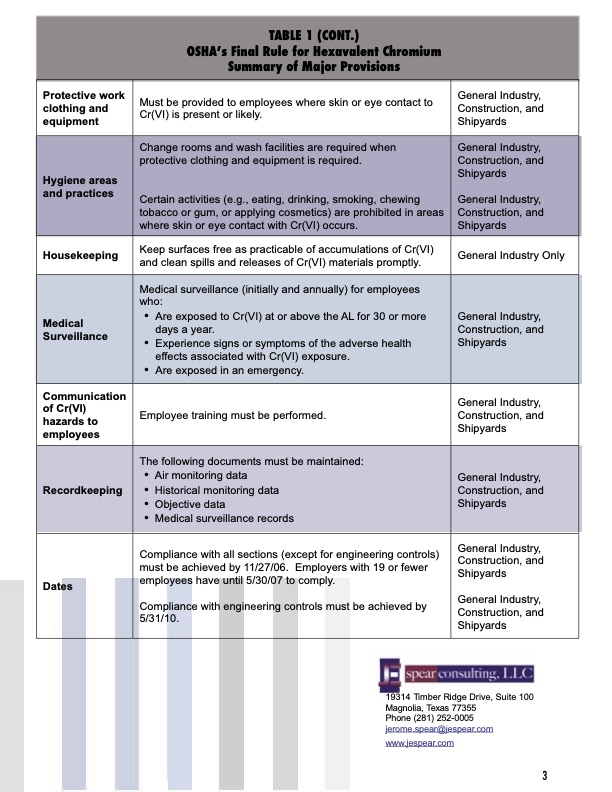Pursuant to a court order, OSHA issued a final rule on February 28, 2006 that addresses occupational exposure to hexavalent chromium (Cr[VI]). OSHA determined that the Cr(VI) rule is necessary to reduce significant health risks due to Cr(VI) exposure. Certain Cr(VI) compounds have been found to cause lung cancer and nasal cancer in humans. Inhaling relatively high concentrations of Cr(VI) can also cause a wide range of other health effects (such as runny nose, sneezing, itching, nosebleeds, ulcers, and holes in the nasal septum). Ingestion of very high doses of Cr(VI) can cause kidney and liver damage, nausea, irritation of the gastrointestinal tract, stomach ulcers, convulsions, and death. Dermal exposures may cause skin ulcers or allergic reactions.
Chromium has been used commercially in the U.S. for more than 100 years. Chromium occurs mainly in three forms, described by its valence state. Metallic chromium (Cr[0]) is a steel-gray solid with a high melting point that is used to make steel and other alloys. Chromium metal does not occur naturally but is produced from chrome ore. Trivalent chromium (Cr[III]) occurs naturally in rocks, soil, plants, animals, and volcanic emissions. Cr(III) is used industrially as brick lining for high-temperature industrial furnaces and to make metals, metal alloys, and chemical compounds. Cr(VI) occurs through the oxidation of chromium compounds with lower valence states. Cr(VI) is considered the greatest occupational and environmental health concern, as it is the most toxic.
According to OSHA, there are a total of 380,000 workers exposed to Cr(VI). Activities that have the potential for Cr(VI) exposure include the following:
- Production and use of chromium metal and chromium metal alloys
- Chromium electroplating
- Welding of metals containing chromium such as stainless steel or other high chromium steels, or chromium coatings
- Production and use of Cr(VI)-containing compounds (such as Cr[VI] pigments, Cr(VI) catalysts, and chromic acid)
- Production of chromium-containing pesticides
- Painting activities involving the application of strontium chromate coatings to aerospace parts
- Removal of lead chromate
Welders, who represent nearly half of the workers covered by this final rule, do not ordinarily work with materials containing Cr(VI). Rather, the high temperatures created by welding oxidize chromium in steel to the hexavalent state.
OSHA issued separate standards for general industry, construction, and shipyard sectors. The provisions in the standards for each of these industry sectors are similar. The major provisions of the final rule are summarized in Table 1.




